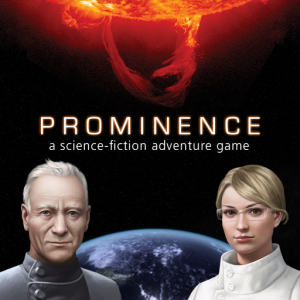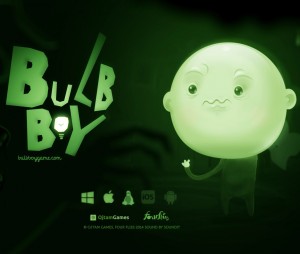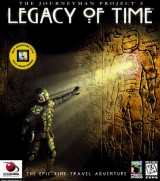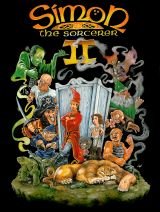Review for The Witness
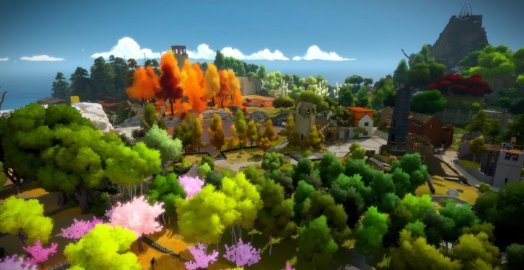
Perhaps the single most important thing one needs to know before embarking on The Witness, the latest game by Jonathan Blow, is to go into it with a wholly clean slate. Forget everything you know about Blow’s previous game, Braid, pitch any preconceptions about traditional adventure games right out the window, and get ready for an enthralling, sometimes grueling, and always satisfying marathon of puzzle-solving and exploration. While it sounds mundane on paper, like nothing more than a barrage of maze puzzles coming one immediately after another, the true serene beauty of the game doesn’t present itself until having spent some time in its colorful, thought-provoking world.
The Witness’s premise can easily be summarized in a few bare-bones sentences. The game opens without fanfare, skipping any sort of menu screen, dropping you right into a long, darkened tunnel, at the end of which awaits an orange panel set into a solid metal door. This panel can be activated by entering puzzle mode, which freezes the camera and causes a reticule to appear on-screen. This puzzle, like all others to follow, must be completed by drawing a line through a maze, from a pre-set starting point to its exit. Doing so causes the door to open, revealing a dark area with another door – and another puzzle – within it. Unlocking this second door opens the path outside, and from here on out the game abandons linear paths in favor of an open island world to explore; you can go anywhere at any time, though each area’s puzzles often have to be activated one after another.
The short tutorial area you’ll find yourself in at the start reveals all there is to know about The Witness’s gameplay: to reach the next of many panels, you freely roam the 3D island in first-person perspective, completely unburdened by any interface or inventory, as no puzzles ever require anything more than your wits. There isn’t even a cursor on screen, save for the puzzle-solving sections. The game removes all artificial barriers to bring players as close to the island experience as possible. This is true even where audio is concerned, as there is no traditional musical score, just the sounds of nature and the player existing within it. When music does appear, it is from natural sources, like a record player that must be utilized as part of a puzzle.
There is no explanation of who created the island and the structures upon it, though clearly someone called this place home. Buildings, statues, and structures you encounter as you journey back and forth point to a large number of individuals at one point inhabiting this land. A cozy bench erected on a scenic overlook, an abandoned lounge chair left on a sandy beach, an artist’s table and several completed sketches tucked away in a peaceful copse of cherry blossoms – these discoveries, while not in any way vital to the gameplay, carry with it a fascinating sense of wonder and tranquility, and yet are disturbing in their isolation. I couldn’t help but be strongly reminded of TV’s Lost, with that same sense of “I could find anything here, at any time”.
The puzzles, as difficult as they become, all trace their roots back to those early tutorial tasks. The objective is always the same: draw a path through the maze, from start to finish. However, the puzzles continuously evolve over the course of the game, adding new symbols onto the puzzle boards that incorporate new challenges into the mix. For example, pips of different colors must be divided into separate sections on the way to the exit. Tetris blocks must be outlined in their exact shape and orientation as the board dictates, which is much harder to do in practice and still make it to the exit than it sounds. The challenges have a lot of variety, and often incorporate more than one unique ruleset into a given puzzle.
Most puzzles must be solved in a limited space, often no larger than a five-by-five or six-by-six panel. Doesn’t sound difficult at first, but considering that the path you trace can’t cross or double back on itself, including at corners, the challenge becomes more pronounced. Occasionally, the panel itself may be altered, such as having parts obscured by shadows, or a shattered panel screen that makes it difficult to correctly see the maze image. Sometimes the puzzles jump off the panel, and incorporate the environment around them to be solved correctly. Anything and everything can be a clue, and coming out on top requires players to keep an open mind and be aware of their surroundings. With all these possibilities (and more), the list of puzzle variations is long and impressive.
The Witness is a game that has absolute faith in the deductive reasoning of its players. As a result, there is no help screen or hint to explain what a particular symbol on a puzzle means; it is summarily up to you to determine the objective of each and every puzzle on the island. To be fair, there are a number of tutorial puzzles that demonstrate the basics for each of the many puzzle variants, designed to ease you into dealing with its specific requirements. The trouble is, these learning puzzles can be scattered anywhere on the island, and chances are that you will encounter at least some of the hardcore puzzles well before happening upon their corresponding tutorials, if ever. This ultimately led to some unnecessarily frustrating moments for me; while I fully appreciate not having my hand held through a game, I’d like to at least have some idea of what the objective of a particular task is if I am to solve it.
One strategy that works really well when hopelessly stuck on a puzzle is to simply walk away, work on some other sections elsewhere, maybe sleep on it, and come back for another try later. There were quite a few times when I came up with ideas for how to solve a particularly nasty puzzle while mulling it over at work or during my daily routine. The Witness is the kind of game that continues to play on in your head while away from it. Make no mistake: it will make players ragequit in frustration, then come back hours later armed with a new strategy. The sense of personal achievement when a new approach actually works in getting past a tricky puzzle is one that is hard to describe – it is that satisfying. Overall, there was only one puzzle (out of over 500 that I solved) that seemed too far on the side of unfair; the rest are tough but workable, provided one understands what exactly it is the puzzle requires.
Though it seems initially that there isn’t any actual objective to the game, other than randomly wandering around and solving puzzles, it does, in fact, all come together in the end. The island is split into loosely defined biomes – desert ruins, bamboo forest, tree houses, town, quarry, hedge maze, etc. – that bleed one into another as you travel between them. Each area has its own series of puzzles, connected by wires leading you from one mounted panel to the next; solve the first one to power up the second, then the third, and so on, culminating at a large yellow block that is the objective of that area. Powering up this last panel will cause a laser beam to be aimed toward the island’s mountain peak. Once enough lasers are activated – seven are needed, though there are a total of eleven – you can actually scale the mountain and enter it, where you’ll encounter the final puzzle area leading to the end.
Whereas the shortest path from beginning to end will probably take somewhere between 20 and 30 hours, there is a lot of incentive to keep playing. After activating the required seven lasers, I refused to proceed to the mountain for a long time yet. Instead, I wanted to fully explore – and solve – each of the other areas on the island. There are abundant bonuses to discover as well, many just for the fun of finding them. There are mysterious locked bunkers around the island containing clues that connect in a certain way. Puzzle mode can be activated at any time while traversing the island, and the environment itself hides countless puzzle opportunities related to black stone obelisks located in each island area. Audio logs can be found in cleverly tucked-away niches and crevices. Some Easter eggs are simply visual illusions that create a whole new image when lining up objects from different areas of the environment from a certain perspective.
If the puzzles offer the challenge and sense of accomplishment in The Witness, the visual presentation offers the sense of awe that makes up the second half of the equation. Full disclosure: my initial impressions upon emerging from the game’s opening tunnel into its first outdoor area were that it looked like it was built in Minecraft. This wasn’t due to the graphical fidelity, but more because the island really seems like a giant Lego experiment that was abandoned midway through: buildings stand dispersed without rhyme or reason amid trees, mountains, rivers, and deserts, all combining to form a microcosm of the island. But once past those early impressions, I found it impossible not to be totally enthralled as I travelled around; my imagination continuously came up with a million-and-a-half scenarios as to what might have happened here, and I was always thirsty to find more, see more. Here, a statue of a Siren carved into a needle of rock protruding from the ocean; there, a horticultural lab, still operational.
While not photorealistic, the colors are among the most lush and vibrant I’ve seen in a game in recent memory. Crystal blues of ocean water and deep sky, soft greens and reds in different shades of forests add to the sense of serenity while playing. The look represents an interesting mix between minimalist and lush, somehow designed for quiet zen yet richly satisfying.
With everything The Witness does well, it never really hit its stride when it comes to a satisfying narrative. There isn’t any conflict, no difficulties to overcome or overarching story to bring to a conclusion. In fact, the ending provided as much insight and closure as the beginning provided a set-up, which is to say none. The only real story was the one spurred in my imagination as I observed the various research stations and statues of people on the mountaintop, clearly engaged in some important event. But answers and closure remained elusive throughout.
For some, maybe the collectible audio logs, most of them narrated passages from works by the likes of Buhhda and Skinner, will provide some form of insight. I wanted to understand the developer’s purpose in including them, but in the end I must concede that I found these philosophical ramblings to be wholly inconclusive and even pretentious. I love a good story, and I am okay with being kept somewhat in the dark instead of spoon-fed every morsel of exposition, but The Witness is overly light on its narrative, perhaps trying too hard to seem nebulous and artistic. Thankfully, its spellbinding setting and gameplay kept me more than motivated to keep playing.
In the end, The Witness is a strange animal. What it does best it does extremely well – there is a lot to discover beyond what’s needed to proceed to the endgame, and completionists will have a field day searching every single nook and cranny for hidden puzzle paths. The challenge its line puzzles impose will be extreme for some, but through perseverance and thoroughness, every puzzle is solvable, and you don’t need to solve them all. But this game will not appeal to those who need clear motivation and a coherent story to follow. In fact, the game so steadfastly refuses to offer helpful instructions that it will likely discourage some players from finishing. I have to imagine this is exactly how Jonathan Blow intended the experience to be, and indeed there’s nothing else quite like it available. Players, however, should only consider heading into this beautiful but virtually narrative-free island puzzle world with eyes open wide, knowing exactly what to expect.














